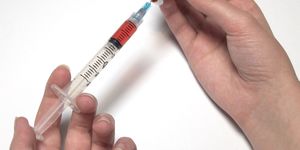CRISPR Used Inside of a Patient For the First Time
In a first, scientists have used the CRISPR gene-editing tool inside of a person's body. While CRISPR has been used to treat humans, it has involved removing cells from a patient, applying the gene editor, and then putting the cells back in the patient. Even the CRISPR babies were engineered using in vitro fertilization.
The BRILLIANCE clinical trial is being conducted by Allergan and Editas Medicine at Oregon Health & Science University's (OHSU) Casey Eye Institute. Only a single patient has been treated so far for an inherited disorder called Leber congenital amaurosis 10 (LCA10), which is caused by errors in a gene called centrosomal protein 290 (CEP290) and is described in the video below. Around eighteen patients will volunteer to test the LCA10 gene therapy.
“This dosing is a truly historic event—for science, for medicine, and most importantly for people living with this eye disease,” said Cynthia Collins, president and chief executive officer of Editas.
In this procedure, a small incision is made to give the surgeon access to the back of the eye. Subretinal injections of a virus are delivered to the patient. The virus carries the genetic instructions for generating CRISPR tools, which are made once it reaches the inside of a cell. The genetic edits it makes are intended to remove the mutated portions of the CEP290 gene, which cause blindness. The function should then be restored to the protein made by the CEP290 gene.
“It’s the first time the CRISPR gene-editing is used directly in a patient,” the principal investigator Eric Pierce, professor of ophthalmology at Harvard Medical School and director of the Inherited Retinal Disorders Service at Massachusetts Eye and Ear told NPR. “We’re really optimistic that this has a good chance of being effective.”
We don't yet know the results of the first trial, in which only one eye was treated. The researchers are being cautious since this is the first time this type of therapy has been applied to a person. If it's successful, the other eye will likely be treated.
“Our first treatment in this clinical trial is an important step toward bringing new and promising treatments to patients with disease-causing gene mutations,” said the prinicipal investigator Mark Pennesi, associate professor of Ophthalmology, the Kenneth C. Swan Endowed Professor, Division Chief, Paul H. Casey Ophthalmic Genetics at the Casey Eye Institute. “OHSU is honored to be involved in this effort to address previously untreatable diseases such as Leber congenital amaurosis 10.”








